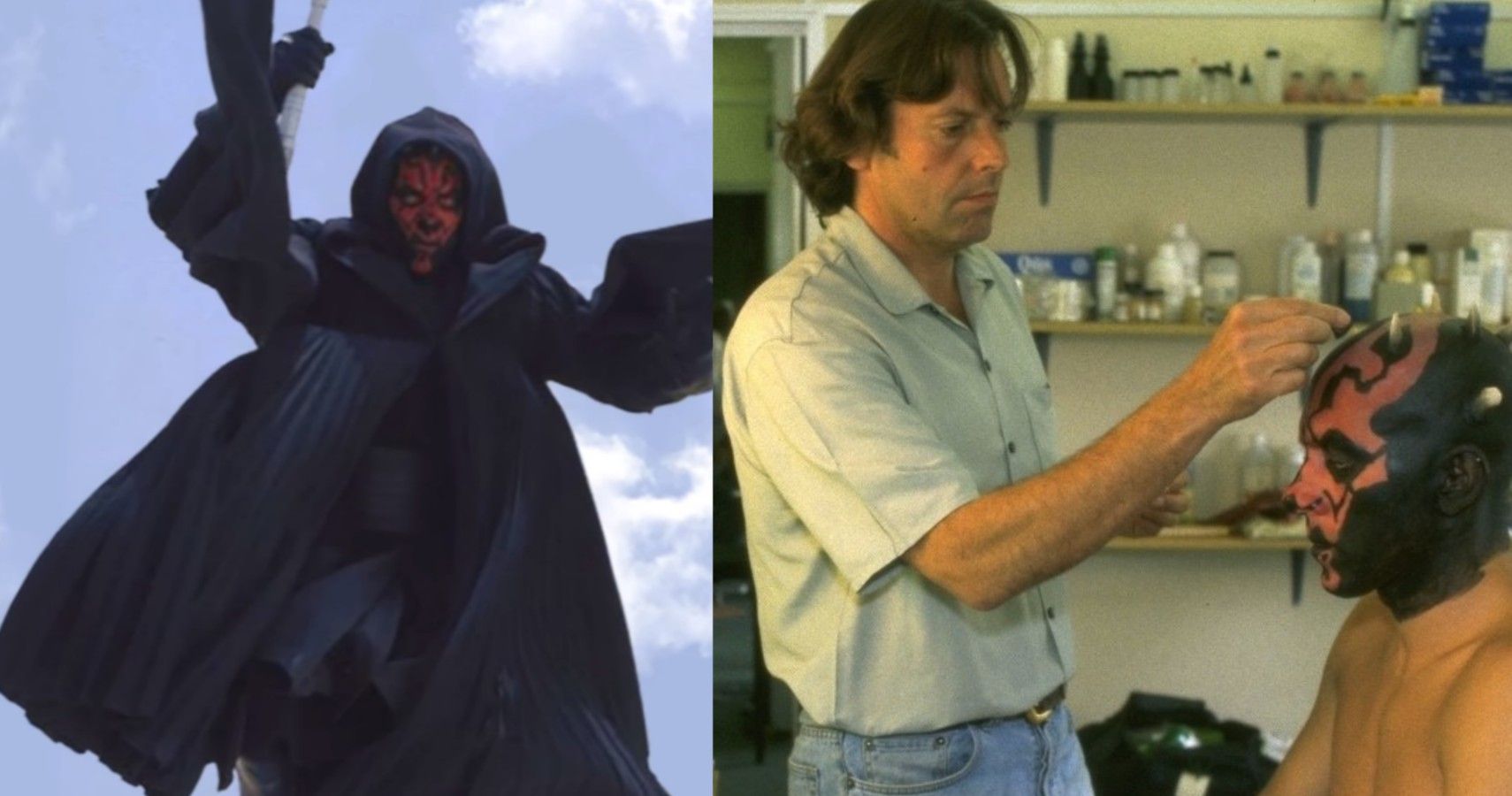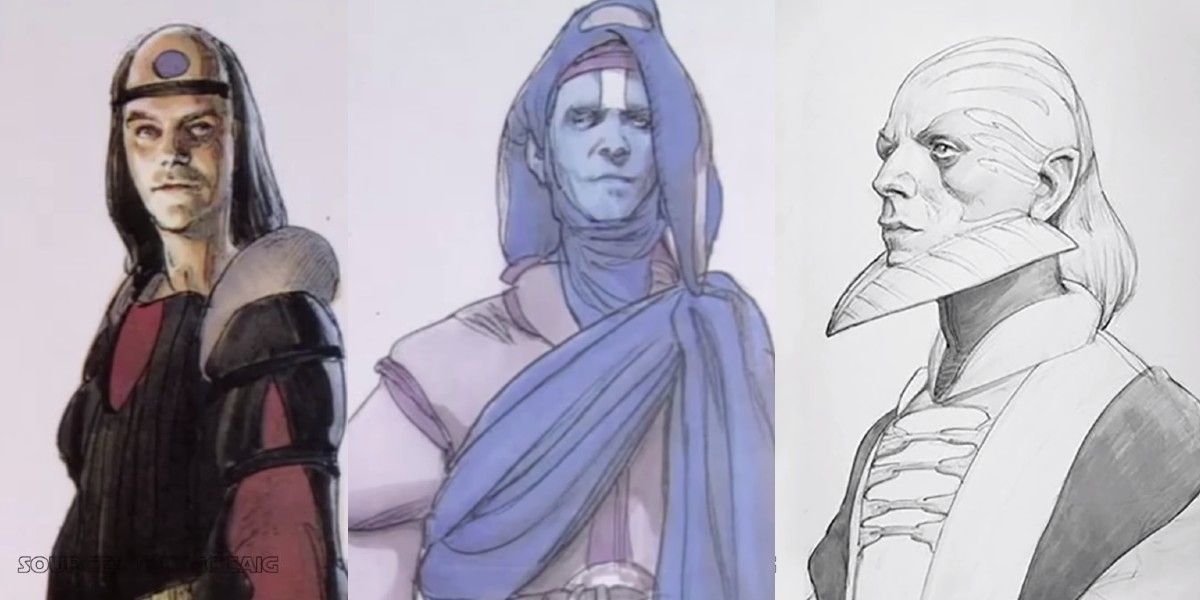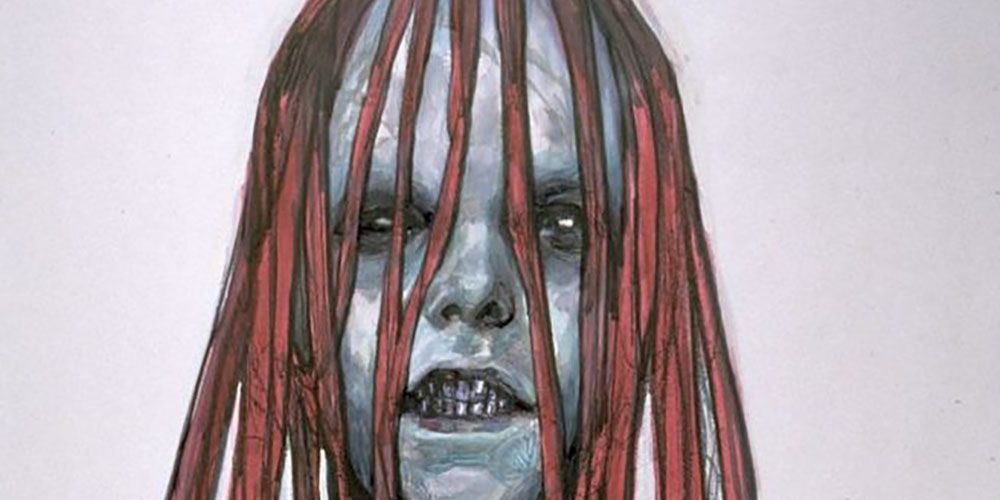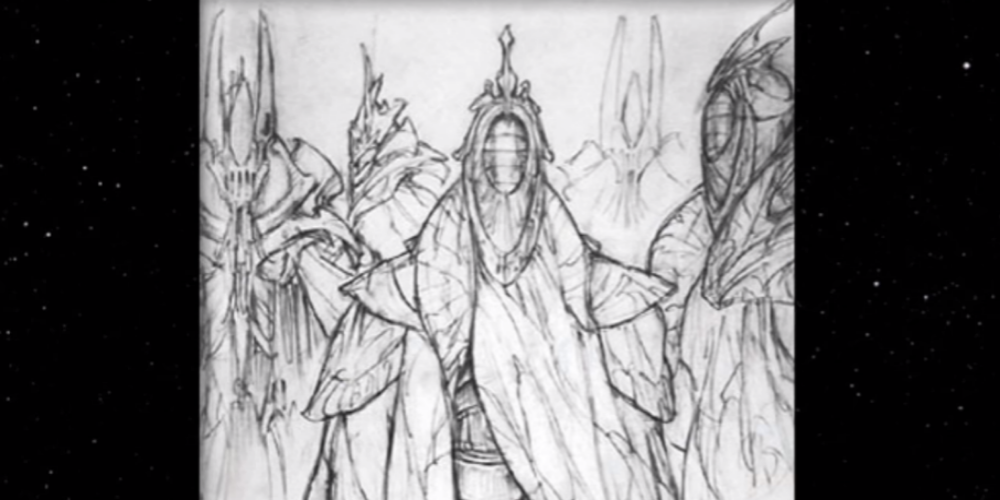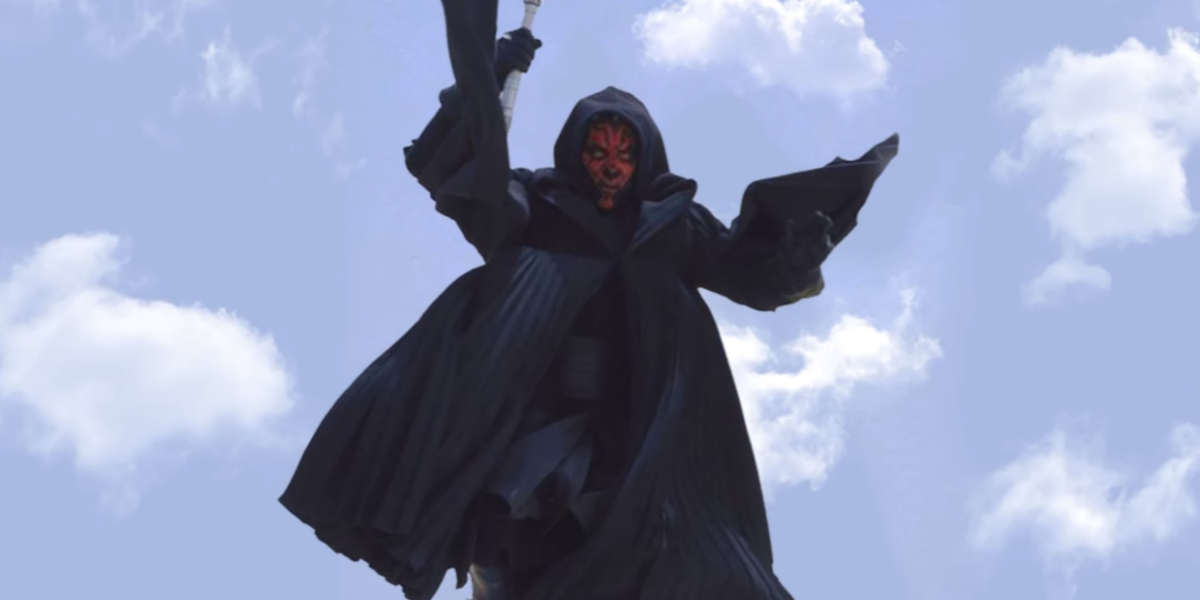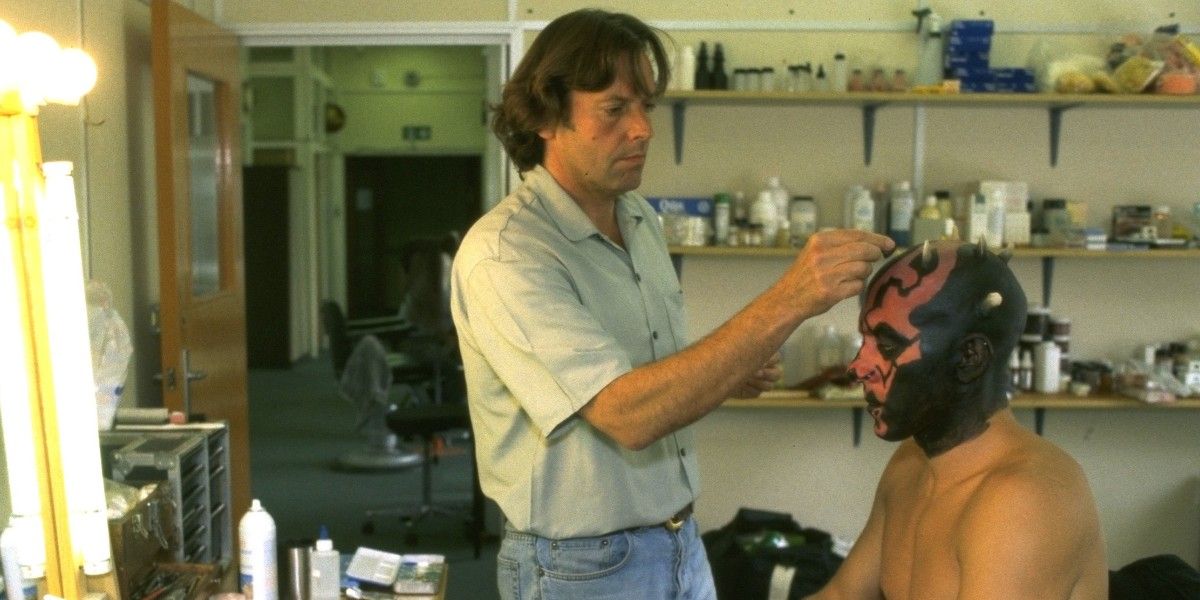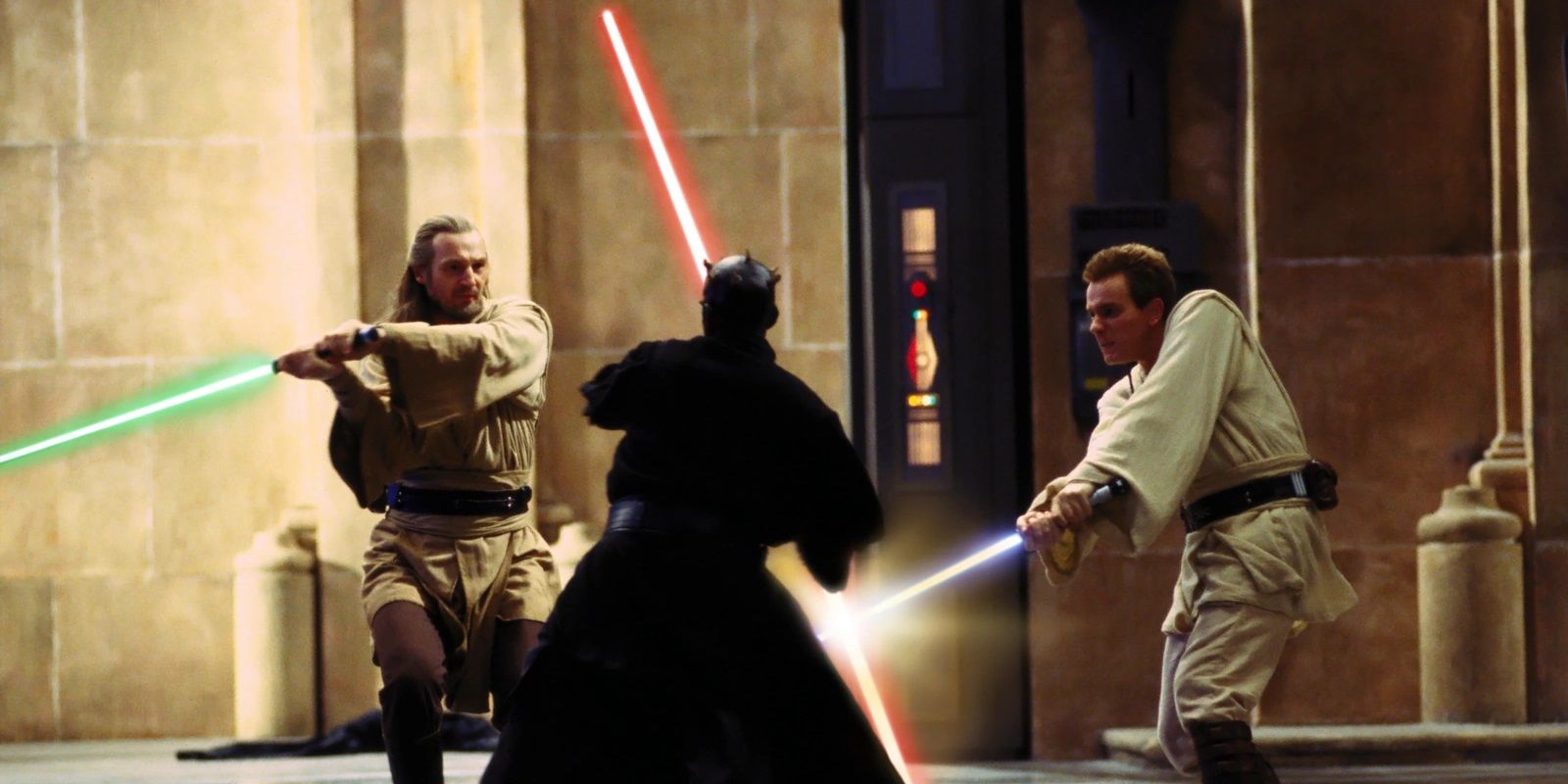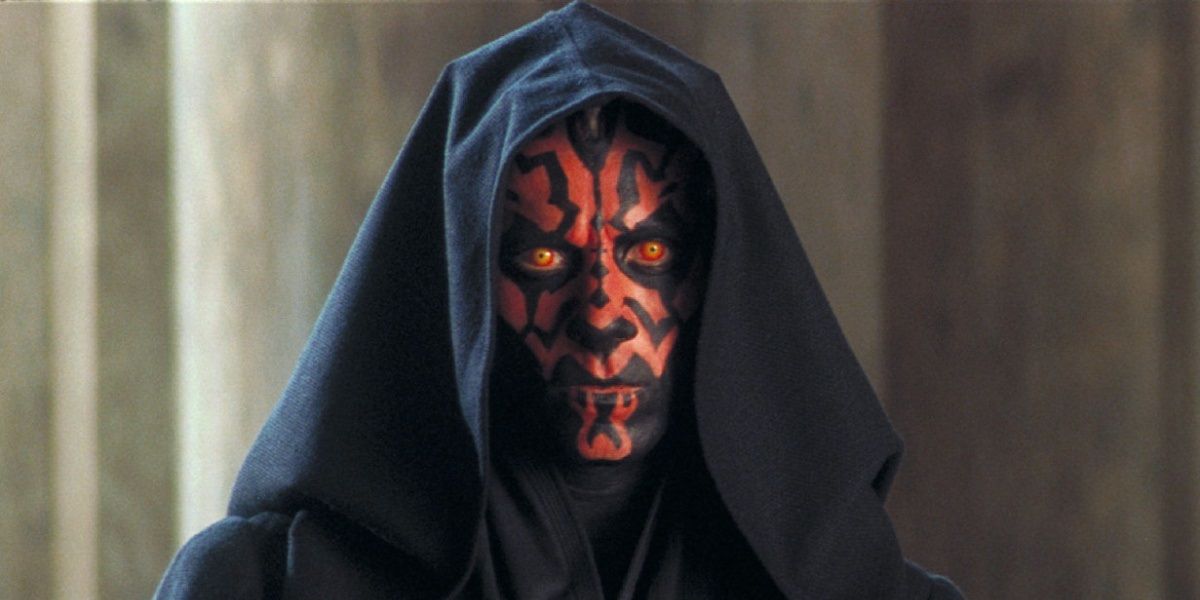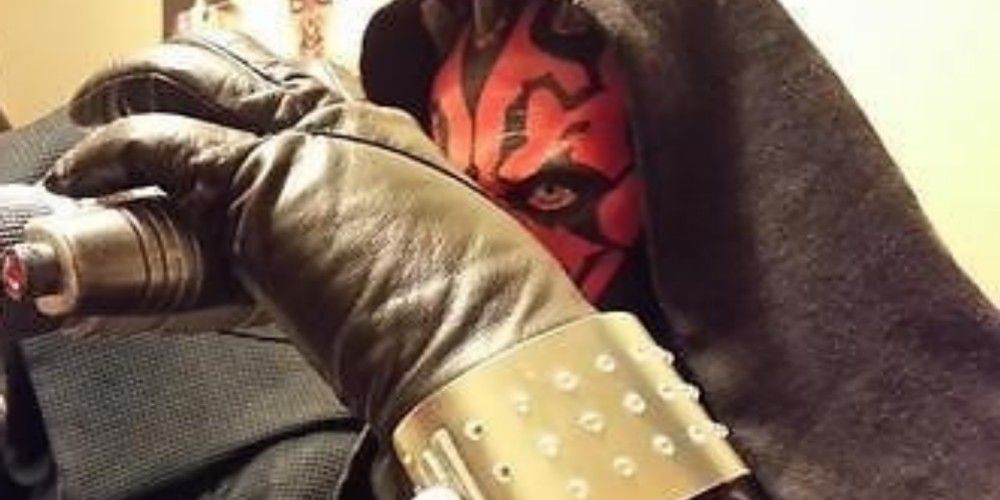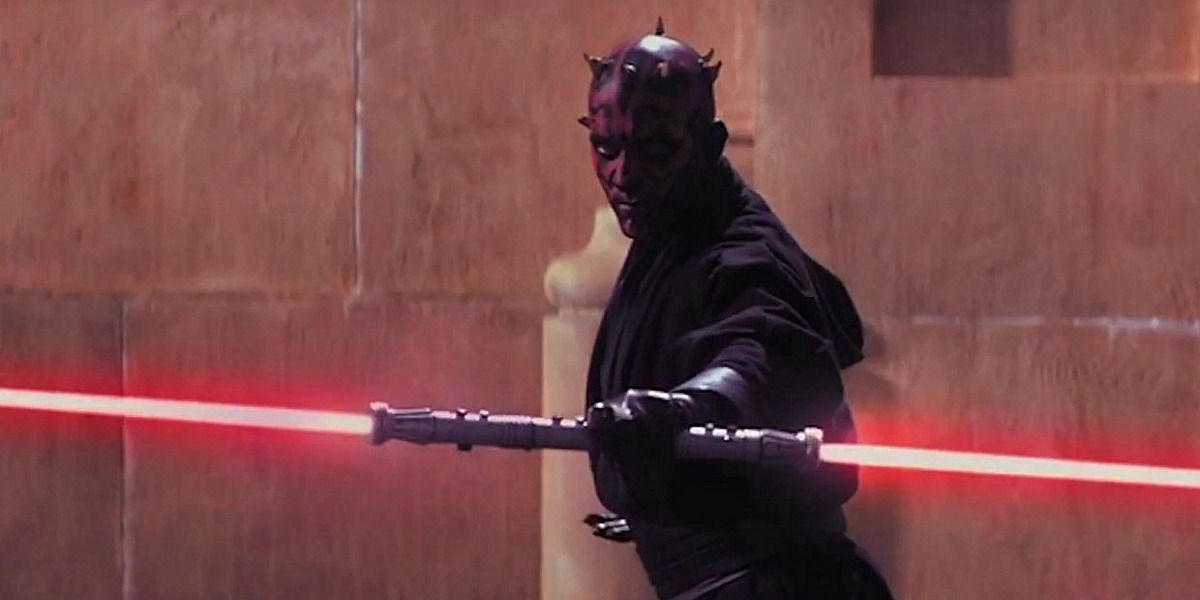From the moment his yellow eyes blazed into view, audiences knew Darth Maul was not to be trifled with. Shielded by an enormous black cowl for the majority of Episode I: The Phantom Menace, when it was finally removed for the climactic lightsaber duel between the Sith warrior and the pair of Jedi Knights, Star Wars fans delighted in his fiendish appearance. His distinctive red and black facial tattoos, crown of vestigial horns, and exotic double-bladed lightsaber cemented his legacy forever as one of the greatest villains in the Star Wars Saga.
While George Lucas's prequel trilogy wasn't universally praised, Darth Maul was one of the best things about it, and he only lasted one film. Luckily for fans, he has resurfaced in other areas of the franchise, such as The Clone Wars and Star Wars: Rebels. The longevity of his character is due in no small part to the iconic look of his costume, and its ability to strike fear into the hearts of Star Wars fans. Below are ten fascinating facts about it.
IT WAS DESIGNED BY IAN MCCAIG
Ian McCaig, who would go on to do concept design work for The Clone Wars as well as the rest of the Star Wars prequel trilogy, was the one who devised the design for Darth Maul's sinister appearance. He based his facial tattoos specifically on a "Rorschach" ink-blot test.
Though Darth Maul's history was never linked with the Night Sisters of Dathomir in The Phantom Menace, Ian McCaig developed the Night Sisters for The Clone Wars and had them have similar facial markings, eventually tying Darth Maul's homeworld to his character design (A Zabrak child raised by Dathomirian witches).
IT WAS ALMOST DESIGNED FOR A WOMAN
The Star Wars Saga would have gotten its first female Sith Lord if early designs by Ian McCaig had been kept. With three years of production time (an unheard of amount for a feature film) available to him, he was given free rein from George Lucas to draft as many versions of Darth Maul as he wanted to, and several included a female Zabrak.
With a pale face with exotic markings, and long, braided red hair, she would come to closely resemble McCaig's designs for the Night Sisters from The Clone Wars. Ultimately Darth Maul went in a completely different direction as a character, but she paved the way for Sith warriors such as Asajj Ventress to emerge.
IT WAS CREATED IN AN OLD AERO-ENGINE FACTORY
In 1997, when production for Episode I: The Phantom Menace was to begin in Leavesden Studios in London, a workroom for initial costume creation was made outside of London where principle photography was to take place. Every piece of principle costuming for the film was created there over a period of eight months.
The old aero-engine factory was filled with couture cutters from across the U.K. and Australia, and the exceptional work of milliners, dyers, and leatherworkers went into making Darth Maul's myriad of robes, gloves, boots, and leather belt.
IT WAS GOING TO ORIGINALLY INCLUDE A MASK
Early drafts of Darth Maul's costume included a mask, similar to what Darth Vader wore in A New Hope. That would have made the two villains too similar, so ultimately the mask idea was scrapped, but George Lucas still wanted Maul to be menacing and easily recognizable.
The vestigial horns coming out of his head were added to provide the menacing vibe, and when combined with the tattoos, the blackened teeth, and the glowing red eyes, gave Maul the sinister appearance he needed as the next big villain of Star Wars. His face became the face of the prequel franchise despite him only appearing in one film.
IT HAS SEVERAL LAYERS
Like the outfits of the Jedi Knights, Darth Maul's costume is a mirror image in black. It can't be reduced to one shade of onyx, however - it consists of many different layers, and different textiles. It has an under tunic as a base, followed by a middle tunic, and then a "shawl" tabard draped about the back of the neck.
The pants are heavily bloused, "harem style" pants that have a deep inseam going almost to the knees with very flared legs. The costume is made of a coarse black linen with a tight weave, and a hood that is two half-circle pieces sewn in the center, making a "wind sock" effect.
IT TOOK HOURS TO GET INTO
Darth Maul's robes may look simplistic, but their cut and fabrication are incredibly complex. That level of attention to detail carries over in the overall aesthetic of Darth Maul's appearance, which includes the crown of vestigial horns on his head, as well as the intricate black and red markings on his face.
George Lucas wanted a threatening villain, and approved of Ian McCaig's Rorschach inspired markings. These were tattoos that indicated the discipline the dark warrior had to the Dark Side. When combined with the horns, skull cap, and teeth blackening, the entire process took hours. Ray Park forgot to take out a small silver earring, which subsequently made it into every shot of the film and promos.
IT'S MADE FOR COMBAT
The genius of Darth Maul's costume lies in its maneuverability. From his black tunic to his field cloak, every inch of fabric is cut to allow freedom of movement during combat situations. He must be able to feel the Dark Side flow through him, and easily channel it into aggressive athleticism, which his costume easily allows. The amazing lightsaber duels in Episode 1 show off the mobility of his robes.
Moreso than even the Jedi, whose robes are meant to mimic the garb of commoners in the galaxy, Maul's attire allows him to blend not just into polite society, but the shadows where he tracks his prey. From his hooded cloak to his heavy-duty action boots, he is prepared for every environment and eventuality.
IT WAS INSPIRED BY DIFFERENT CULTURES
Similar to the robes of the Jedi Knights, Darth Maul's robes were based heavily on the casual robes of Japanese Samurai, the kimono-style under robes that they wore when not in full battle armor. The hanging skirts of varying lengths, as well as his tunic and tabard, were meant to evoke an exotic homeworld.
His cloak was inspired by a photograph of a Tibetan lama taken in 1940 and was made from hand-dyed coarsely woven silk and linen fabric. Its shoulder to ankle length circular portions were "sunray pleated", which worked to create a narrow silhouette when he was motionless. When he was in combat, they would swirl out in a fully circular shape, like a Ninja throwing star made of fabric.
IT HAS A PROGRAMMABLE WRIST LINK
Though the mainstays of Darth Maul's costume evoke an intimidating silhouette of opaque black, there are aspects of it that telegraph his use of advanced technology. His programmable wrist link, concealed beneath one of his black leather gloves, allows him to direct a "dark eye" probe droid remotely. He sent one to investigate the vestibules of Mos Espa and spy on Qui-Gon Jinn and his new friend, Anakin Skywalker.
The wrist link also allows Darth Maul to detonate explosive devices from a distance, arm concealed traps, and send information to his master, Darth Sidious. He can also receive information through the link from secret surveillance devices.
THE DOUBLE BLADED SABER REQUIRED STAFF TRAINING
As the main villain, Ray Park was responsible for bringing the same dread to The Phantom Menace as Darth Vader first did in A New Hope. He developed a specific style of fighting for the role, making Darth Maul's combat training unique.
Because Darth Maul has a double-bladed lightsaber, training with the weapon required Ray Park to learn not only saber and kendo fighting techniques, but also use of the staff, considering that's what the double-bladed saber resembles when both blades are ignited. The pin-wheeling maneuvers he does are a hallmark of staff fighting and look impressive onscreen.

